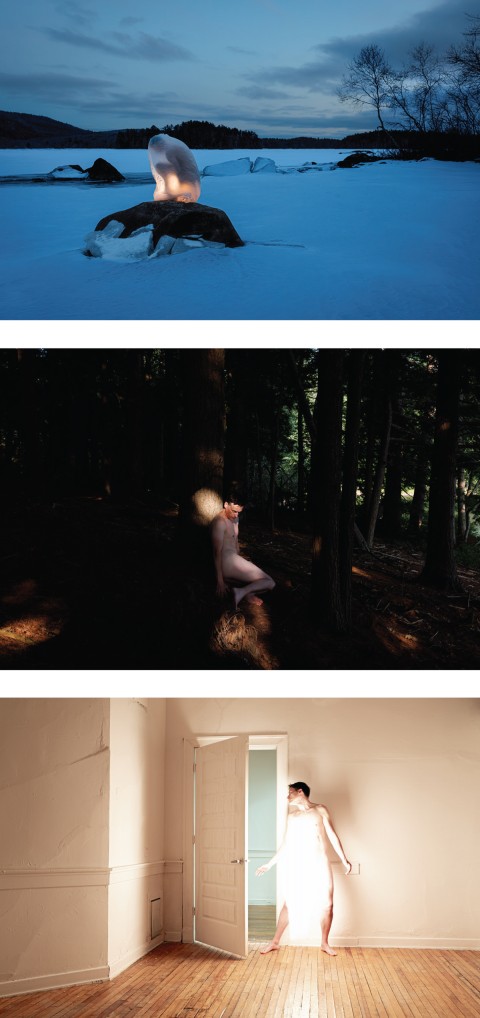Jason Freeman’s
Pre-Mortem I (top), Myself-Less
(middle), and Bright Veil (bottom)

(All images used by permission of the artist)
Male artists have often reveled in the male nude as an expression of power and perfection. This was especially true of classical sculptors and the Renaissance artists they inspired. In Michelangelo’s hands, even David the slight shepherd becomes a towering specimen of masculinity. Yet there is a countertradition as well, focused on the vulnerability of the stripped figure. Matthias Grünewald’s Isenheim Altarpiece emphasizes the frailty of Jesus on the cross, true power made possible only by relinquishing it.
Is there a middle ground between reveling in corporeal beauty and spurning it? This is the question photographer Jason Freeman navigates in his self-portraits. At first these images might seem to prize Freeman’s trim runner’s physique. Yet he insists on placing himself in risky positions, whether physically (by contorting himself along rock faces or exposing himself to frigid water) or emotionally (by returning to sites of insecurity, like his now-abandoned junior high school).
Freeman’s awakening as an artist coincided with his adult conversion to Catholicism, and throughout his work there is a relentless spirit of self-examination. In his Divining Masculinity series he finds both a warning, to eschew physical idolatry, and a calling, to look inward for alternatives. This practice carries on in the series Pre-Mortem, a phrase taken from management strategy, in which one assumes future failure in order to calculate present perils (a technique quite familiar to biblical prophets!). By enclosing himself in plastic bags—objects at once mundane and lethal—Freeman conjures disturbing images of both suffocation and ecological extirpation. By imagining an end, he signals the potential for rebirth. Encased within an unlikely caul, a warm glow illuminates the artist’s body in Pre-Mortem I. Crouched on a stone poking through the ice, the artist looks poised to shed this sac and stumble forth into a new world.




